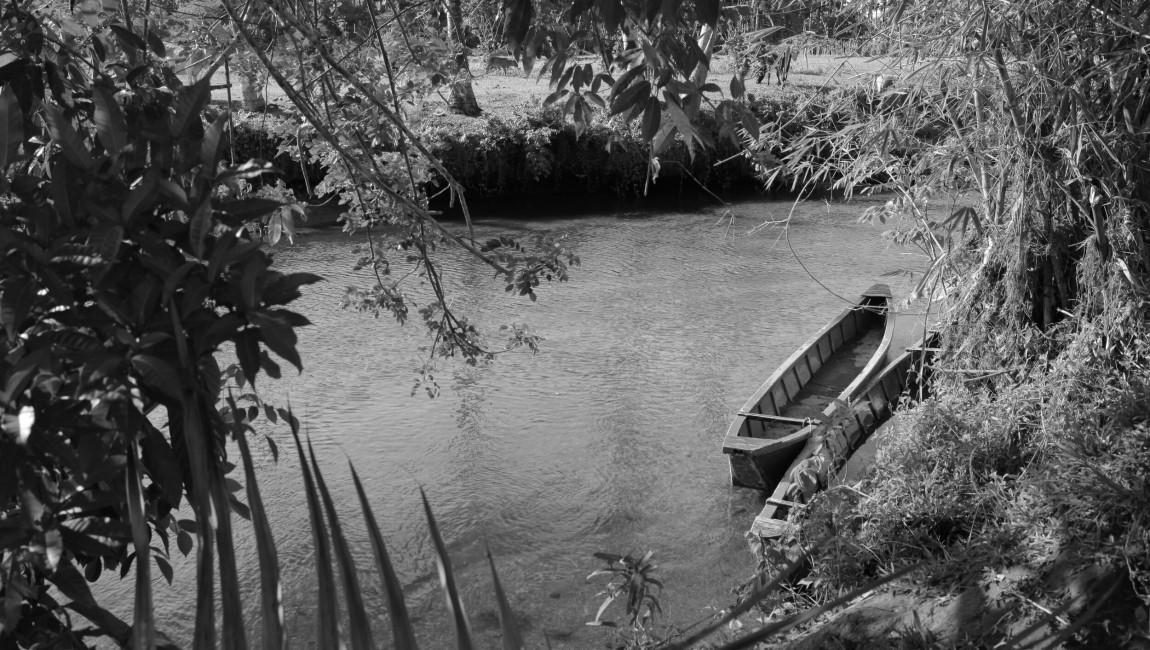In an interview with Michael Guarneri, Lav Diaz states quite emphatically that “tragedy and suffering are an inherent part of man’s existence and death is inescapable. Only truth is regenerating and liberating, if you can find it and accept it.” There’s arguably no one doing more right now to confront authoritarianism in their art than Diaz, who has been mercilessly critiquing Filipino president Rodrigo Duterte for years. Duterte has supposedly retired from politics, but recently elected president Ferdinand Marcos, Jr., son of infamous dictator Ferdinand Marcos, suggests there is still plenty of work to be done combating fascist nationalists. While Diaz’s 2019 film The Halt imagined a futuristic, dystopian version of Manila, When the Waves Are Gone eschews that film’s crypto-sci-fi trappings to delve headlong into the extra-judicial police killings that came with Duterte’s so-called “war on drugs.” As usual with Diaz, a simple plot synopsis doesn’t really get at what actually makes his long, enveloping films unique, that overpowering sense of cinematic time becoming unmoored and moving independently of the character or story that it possesses. While the Venice Festival description says flatly that When the Waves Are Gone is an adaptation of Dumas’ The Count of Monte Cristo, that source material is at best merely a jumping-off point (much like the opaque connections between Crime & Punishment and Norte, the End of History).
Introduced as the police force’s greatest investigator, Lt. Hermès Papauran (John Lloyd Cruz) teaches classes at the police academy while simultaneously spending his nights tracking down his wife’s lover. He finds them together and violently confronts them, only to be called out as a wife beater back at work. In a fit of rage, he then attacks the fellow officer who dared make the incriminating remarks, then abruptly quits the force in an act of contrition. Concurrently, Primo Macabantay (Ronnie Lazaro) is released from prison and sets about finding Hermès, the officer responsible for putting him behind bars. In the meantime, Hermès confers with his friend Raffy Lerma (DMs Boongaling), a photojournalist who has documented an untold number of murders by both police and vigilantes looking to enforce zero-tolerance drug policies. Stricken with an increasingly serious case of psoriasis, Hermès returns to his ancestral home and tries to patch things up with his estranged sister, Narissa Papauran (Shamaine Centenera-Buencamino), while an increasingly unhinged Primo prowls the city at night preaching the gospel to sex-workers and looking to baptize them.
In his book Sculpting in Time, Tarkovsky pontificates on the idea of “art making infinity tangible.” Diaz is after something similar, his “slow” (an awful word) cinema allowing for the full weight of history to press down upon his characters. Diaz links the literal decay of Hermès’ body to his moral decay, while simultaneously casting the conflict between Hermes and Primo as a synecdoche for the whole of Filipino society. In other hands, this would be an intolerably blunt, ham-fisted metaphor. But Diaz allows it to play out on this epic yet intimate canvas, where it becomes a kind of primal howl of rage against the world. As is typical for Diaz, the camera is largely static, each scene playing out in long, fixed takes, usually perched at a slight god’s eye view (if Ford was a great director of ceilings, Diaz does the same for floors). A wide-angle lens creates plenty of depth of field, as characters traverse city streets or long stretches of beach in what feels like real time. There’s no cross-cutting here; instead, Diaz devotes long chunks of narrative time to each character. Primo isn’t even introduced until almost 40 minutes into the film (out of a three-hour runtime; practically a short by Diaz’s standards).
After a long period of working as his own director of photography, Diaz has reunited with collaborator Larry Manda, the cinematographer of Norte, Season of the Devil, and others. Shooting on Super 16mm film instead of digital, When the Waves Are Gone has a somewhat softer black and white than Diaz’s other recent work, which leaned toward high contrast, blown-out whites, and those stark but fuzzy highlights that digital tends to favor. Film gives more gradations to the images, a nice grayscale that adds depth and volume. It’s a great-looking film, and the reduced runtime and simple genre hook might make this an ideal introduction to Diaz for the uninitiated. For longtime fans, it comes across as a little slight, if still quite worthwhile. But whatever its flaws, Hermès’ and Primo’s final confrontation suggests a grappling with a violent past in an effort to grasp at some sort of truth. These men gaze into the dark abyss of the modern world and willingly jump into the void. Diaz suggests that they deserve it.
Published as part of Venice International Film Festival 2022 — Dispatch 1.







